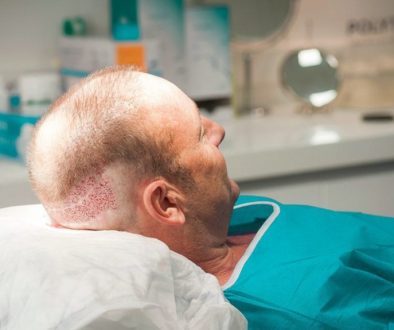Can a Hair Transplant give me a full head of hair?
Note – This insightful article was written by Bill who is a major and respected contributor to the Hair Restoration Discussion Forum.
Many people ask if a hair transplant will restore a full head of hair. What people typically mean when they ask this question is “Will I be able to restore my hair to look like the good old high school days (or maybe Junior High for some)?” For some, this may be more possible than others, depending on the level of hair loss one is experiencing, however, before we answer this question, let’s take a look at more specifics regarding this topic.
One has a finite supply of donor tissue that can be removed for hair transplantation during strip surgery (regardless of number of sessions). Additionally, there are only so many hairs that can be extracted using the Follicularunit excision (formerly follicular unit extraction)n (FUE) or the Follicular Isolation Technique (FIT) without the donor area looking moth-eaten. Because there is a limitation of how many donor hairs can be taken, clearly these grafts/hairs should be used wisely, taking into consideration factors like density verses coverage. Clearly those with lesser amounts of hair loss can use their grafts to dense up existing balding areas (assuming their hair loss is under control), whereas those with greater amounts of hair loss has to sacrifice one or the other, density or coverage. One can choose to dense up the frontal part of their scalp for example and leave the crown bald, or choose to cover the whole area whereas density will be sacrificed.
The phrase “illusion of density” is common when discussing hair transplantation. Because donor supply is limited, there is simply no way to restore a “full head of hair”, BUT, with proper use of the limited donor grafts/hairs, hair restoration physician and clinics can strategically place the grafts over the balding region to create an “illusion of density”. This means that for the most part one might appear to have a full head of hair, even though it’s much thinner than it used to be in their glory hair days.
How then is the illusion of density different than having a full head of hair?
I think the best way to answer this question is to discuss lighting. Being a hair transplant patient, I’ve gone from a Norwood 6 to having a pretty decent head of hair after 7550 grafts. I have also found, that some lighting is much more flattering than others.
I believe the appearance or illusion of density related to lighting depends on several factors:
1. Illumination
Brightness will clearly influence how dense our hair looks. The brighter the light, the more detail is exposed. A quality hair transplant will stand up in all lighting conditions – in that it will look natural, however, clearly, the appearance of density will lessen as the light brightens
2. Color:
Lighter colored lights such as florescent ones lessen the appearance of density whereas normal or colored lights increase the appearance of density.
3. Direction/Angling
I have found specifically that direct sunlight hitting my hairline makes my hair appear super dense, whereas the sun coming from behind makes my hair look much thinner from the front. Straight overhead (around noon), I’d say my hairline looks somewhere in between these two extremes.
But do not be deceived. Lighting affects even those with a full head of non-balding native hair (especially when their hair is kept shorter). It just isn’t as obvious. Remember, we ARE dealing with less density than one with a full head of native hair, hence the illusion of density.
One question that tends to come from this discussion is: So which lighting exposes the truth? There are varying answers, but here’s mine: They all do. The only exception to this, I’d suggest are photos taken with flash photography. To see more on this topic specifically, see the following thread posted by Joe Tillman, a patient, fellow member of our community, and employee of Hasson and Wong: http://hair-restoration-info.com/eve/forums/a/tpc/f/346…141012852#5141012852
The bottom line is at varying points of one’s day and/or life, we will be seen in all types of lighting. At the same time, though, one has to consider where they will be seen the most. I admit there have been times where I am talking to someone outside and end up noticing that the sun is behind me. So I’ll strategically angle myself so the sun is more flattering to my hairline. Some might consider that a worry they don’t want to have to deal with, but for me, I am not all that concerned. But I do know where I look the best…so sometimes I remember and try to face that way. This would be the same concept as those who are into body building. Certain lights and mirrors are more flattering than others, therefore, they prefer to flex in front of those mirrors, in that lighting.
As a hair transplant patient three times around, I’d say, however, that my level of satisfaction is very high! I have realized that even in the worst lighting conditions, I still look 1000 times better than I would without hair transplantation. And the truth is…I don’t feel that even in worst lighting that it looks bad.
I hope this gives you even more of an understanding of how hair transplantation works and what to expect from your hair transplant.
Bill (click here to view his most recent hair transplant surgery)
Technorati Tags: hair transplant, hair loss, hair transplantation, Follicularunit excision (formerly follicular unit extraction)n, Follicular Isolation Technique, balding, hair restoration



